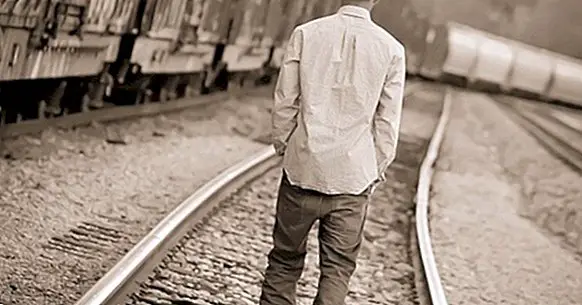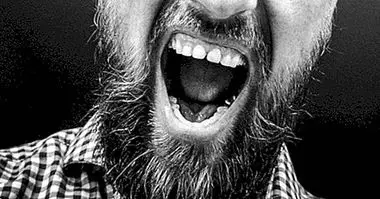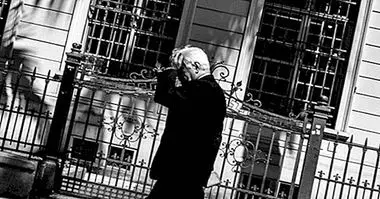The influence of child sexual abuse in cases of teen suicide
We are at a time when more and more cases of sexual abuse in childhood are coming to light, it might even seem that there is a boom in this type of abuse, although what really happens is that they are becoming more visible.
According to the studies, around 7.4% of men and 19.2% of women have been victims of this type of abuse , although these figures can not be taken as determinants due to the high number of cases that are not reported.
Sexual abuse in childhood: a silenced reality
Contrary to what is believed, the most frequent sexual abuse of minors are committed within the family nucleus and by a person with whom the child has an affectionate and trusting relationship.
The studies also reveal that in a high percentage of cases the abuses are carried out within a context of play, of which the adult is used so that the children participate without being aware of the implications of these behaviors and that is why, in In many cases, these behaviors go unnoticed by the rest of the family members, who are unaware of the facts.
The effects of having suffered sexual abuse in childhood
But what involvement can sexual abuse have in childhood?
The studies carried out for this purpose inform us that p symptoms may appear both in the short and long term and that these symptoms They can affect all facets of the child's life.
Although it is considered that around 30% of the victims of sexual abuse do not present associated symptoms, the rest of the victims usually present a series of short and long-term problems among which are anxiety, depression, low self-esteem, feelings of guilt, stigmatization, problems of attention and concentration, problems to relate, sleep disorders, uninhibited sexual behavior, suicidal ideas and suicide attempts, among other symptoms, that over time and if they persist can be aggravated until the appearance of depressive and bipolar disorders, post-traumatic stress disorders, borderline personality disorders and self-destructive and self-injurious behaviors (Pereda, 2009).
Suicides: figures and data
One of the most serious consequences given the intentionality to end one's life, is suicide. Around 50% of men sexually abused and 67% of women have or have had suicidal ideation and a considerable percentage of them have tried to end their lives (11% of women and 4% of men).
More on this topic: "Suicides: data, statistics and associated mental disorders"
But are there any data that supports this claim? The answer is yes. Studies regarding adolescent suicide are scarce due to the social impact they have since, as in the case of sexual abuse, they are problematic that remain underlying and do not easily come to light, but already in 1991 Cirillo and Blasco argued that victims of sexual abuse who had not felt heard or protected had tendencies to exhibit self-aggressive behaviors that could lead to suicide.
Another study reveals that mistreatment, without distinction of category, in childhood is associated with suicide in adults at a rate of 5.53% and that the severity of abuse could even influence the beginning and frequency of these attempts, seemingly there is a correlation between attempts and suicide attempts and the time elapsed since the abuses occurred, since these behaviors appeared around 2 years after having suffered them (González-Forteza, Ramos Lira, Vignau Brambila and Ramírez Villarreal, 2001 ).
Several conclusions
Seeing these figures It seems clear that there is an important correlation between having suffered sexual abuse in childhood and making suicide attempts in adolescence .
Although it is not the only cause that motivates them, since the studies that are based only on attempts of adolescent suicide present as risk factors for this type of behaviors, in addition to the abuses in childhood, the existence of family dysfunction , anxious-depressive symptoms and behavioral problems. Even so, the data are alarming and reveal the enormous consequences both psychological and physical that may be suffered by people abused during the childhood stage.
Bibliographic references:
- González-Forteza, C., Ramos Lira, L., Vignau Brambila, L. B. and Ramirez Villareal, C. (2001). Sexual abuse and suicidal intent associated with depressive distress and suicidal ideation of adolescents. Mental Health Mexico, 24, N.6, Dec.
- Larraguibel, M .; González, P .; Martínez, V .; Valenzuela, R. (2000). Risk factors of suicidal behavior in children and adolescents. Chilean pediatric journal, 71, 3.Mayo.
- Páramo Castillo, D., Chávez Hernández, A. M. (2007) Child abuse and suicide in the State of Guanajuato. Mental Health, 30, nº3, May-June. P. 59-67.
- Pereda, N., (2009). Initial psychological consequences of child sexual abuse. Papers of the psychologist, 30 (2), pp135-144.
- Pereda, N., (2010). Long-term psychological consequences of child sexual abuse. Papers of the psychologist, 31 (2), pp. 191-201.



















